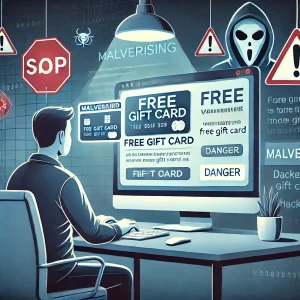Bad software comes in many forms, but two of the most serious threats businesses face today are malware and ransomware. These types of malicious programs can damage your computers, steal sensitive data, and cause serious downtime. Understanding the difference between malware and ransomware — and how they operate — is essential to protecting your business.
Malware is the general term used to describe any “malicious software” designed to cause harm. It includes a wide variety of programs that can corrupt your files, steal your personal information, or even use your computer to attack other systems.
 Some common types of malware include viruses, which spread from one computer to another; worms, which can replicate themselves without any action from you; trojans, which disguise themselves as legitimate programs to trick you; and spyware, which secretly monitors your activity.
Some common types of malware include viruses, which spread from one computer to another; worms, which can replicate themselves without any action from you; trojans, which disguise themselves as legitimate programs to trick you; and spyware, which secretly monitors your activity.
The damage malware causes can vary widely. It may slow down your system, delete important files, steal your private information, or give control of your computer to cybercriminals. Some malware quietly operates behind the scenes without you ever knowing, while others cause immediate and noticeable problems.
Ransomware, on the other hand, is a specific type of malware that takes your data hostage. It works by locking your files — or sometimes your entire computer — and demanding payment to unlock them.
Think of it as a digital form of kidnapping. Ransomware usually finds its way into your system through infected emails, suspicious downloads, or compromised websites. Once inside, it encrypts your files and displays a message demanding payment for the decryption key.
Sometimes, even paying the ransom doesn’t guarantee that you’ll get your files back, as some attackers simply take the money and disappear.
There are two main types of ransomware. Locker ransomware locks you out of your entire computer, making it unusable. Crypto ransomware specifically targets your files, encrypting them while leaving the system itself accessible. Both types are disruptive and can severely impact business operations.
While malware and ransomware share some similarities, their goals and behaviors differ. Malware is often designed to operate silently, focusing on stealing data or causing long-term harm without immediate detection.
Ransomware, however, is loud and upfront. It wants you to know it’s there because the demand for payment is the whole point.
Unfortunately, malware and ransomware have many ways of sneaking into your business. They often arrive through infected email attachments, fake websites, compromised USB drives, or outdated software with security holes.
Staying protected means keeping your systems updated, using strong passwords, being cautious with links and attachments, and regularly backing up your data.
Knowing the difference between malware and ransomware isn’t just technical trivia — it can make a big difference. The better you understand these threats, the more prepared you’ll be to prevent them.
And if you ever do fall victim to an attack, identifying what you’re up against will help you respond more effectively and minimize the damage.
If you’re unsure whether your business is fully protected or need help strengthening your defenses, get in touch.
We’re here to help you stay secure.






 Like other viruses and malware, malvertisements take advantage of security vulnerabilities on users’ computers and mobile devices. These may be anywhere from the operating system, to web browsers and other applications, to add-ons and extensions like Java, JavaScript, and Flash.
Like other viruses and malware, malvertisements take advantage of security vulnerabilities on users’ computers and mobile devices. These may be anywhere from the operating system, to web browsers and other applications, to add-ons and extensions like Java, JavaScript, and Flash. As a result, even if an organization has made an effort to improve a system’s security, a user doing work on a personal computer has the ability to disable and circumvent protections and has the privileges to allow for the installation of malware.
As a result, even if an organization has made an effort to improve a system’s security, a user doing work on a personal computer has the ability to disable and circumvent protections and has the privileges to allow for the installation of malware.